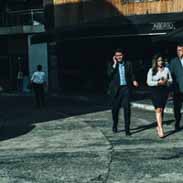Basic Health Care Flashcards, test questions and answers
Discover flashcards, test exam answers, and assignments to help you learn more about Basic Health Care and other subjects. Don’t miss the chance to use them for more effective college education. Use our database of questions and answers on Basic Health Care and get quick solutions for your test.
What is Basic Health Care?
Health care is an important issue in today’s world, and it should be given the attention that it deserves. Basic health care is essential for everyone, regardless of age, gender, or socioeconomic status. It ensures that all individuals have access to quality healthcare services and can lead healthier lives.Basic health care includes preventive health services such as immunizations, screenings for diabetes and hypertension, mental health assessments, reproductive health services such as contraception and family planning education, along with primary medical care from a doctor or nurse practitioner. These services are often coordinated by a primary care provider who provides both disease prevention and treatment when necessary. In addition to these services, basic health care may also include oral healthcare such as regular dental check-ups and basic eye exams. Access to basic health care is essential for ensuring good physical and mental well-being. When people receive necessary preventative screenings they are able to address issues before they become more serious problems down the road. Furthermore it decreases the need for expensive emergency room visits which often come with much higher costs than preventative visits due to facility charges in addition to treatment fees. The cost of providing basic health coverage can often be prohibitively expensive for many individuals which makes it difficult for them to receive these important preventive measures at an affordable rate without assistance from their employers or government programs like Medicare or Medicaid which provide subsidized coverage options based on income level or disability status among other factors. This means that many people go without the necessary examinations needed to detect potential illnesses early on or risk facing high out-of-pocket expenses if they choose to seek out medical attention themselves even if they have insurance coverage through their job or government program. The cost of foregoing these vital preventive measures could potentially cause major issues later on in life with longterm consequences not just financially but medically as well which would outweigh any savings achieved by avoiding those initial preventative exams in the first place. In conclusion ,basic healthcare is essential for all individuals regardless of age ,gender ,or socioeconomic status. It ensures access to quality healthcare services while helping reduce longterm expenses associated with serious illness caused by lack of proper preventative measures. Unfortunately ,the cost of providing basic healthcare can be prohibitively expensive causing some people not seek out medical attention until after an issue has become more severe thus increasing their overall medical costs.







